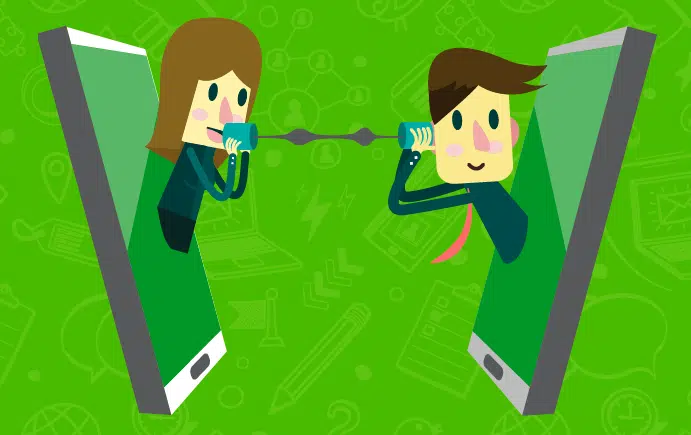4 Ways to Use Social Media for Social Good (Especially in Times of Social Distancing)




The recent Social Dilemma documentary on Netflix has sparked the debate on the dark side of social media. And it’s true, social media can have damaging effects on how we see ourselves and the decisions we make, but it can also be a tool for connection and change. I have seen how Instagram, Facebook, Twitter, and LinkedIn have given people access to information they would otherwise never get and the possibility to share their voices with global audiences.
Here are four ways social media can help increase social good movements’ reach and impact.
1. Creating a community of like-minded people
One of the main benefits of social media is connecting with like-minded people. By using the correct hashtags, opening groups on Facebook, or connecting with people on LinkedIn, we can create global communities with shared values to discuss topics, share advice, and support each other. Facebook groups, for example, can be the first place people look for advice when no one close to them can answer their questions. One of the most popular and engaging Facebook groups in 2020 is Family Lockdown Tips and Ideas, where people share tips for families with kids during the global pandemic. It now has more than one million followers. Another popular one is Women of Impact, a group moderated by NatGeo. In it, members share inspiring stories of women, give career advice, and even create contacts to bring virtual relationships to the offline world. Facebook groups, Instagram hashtags, and Twitter chats can help raise awareness on problems we didn’t even know existed and show us that we are not alone in the desire to act, so social good causes need to be present in these online spaces.
2. Connecting with younger audiences
One of the main concerns of social media use is its impact on younger audiences. Yes, there is a lot of harmful content out there, but nonprofits, social enterprises, and young activists can use social media to spread awareness on global issues like food waste, climate change, and education. The Fridays for Future mass protests that the world witnessed throughout 2019 quickly moved online to sustain the momentum after COVID-19. In Germany, youth activists held online demonstrations and events in April 2020. Some did chalk paintings on sidewalks and hung banners to make themselves visible even in a socially distant time. This shows that social media can become a place to listen to the younger generation’s demands and find ways of working together. TikTok, an app known for attracting newer generations, provided a space for activists and changemakers with the TikTok for good campaign. They support different international organizations, like the International Federation of the Red Cross, or causes like International Homeless Animals’ Day to motivate users to create videos about social issues and, in some cases, raise money. During the International Homeless Animals’ Day campaign in August 2019, TikTok donated 1$ for every video posted of pets and their humans.
3. Sharing bite-sized information in multiple formats
Every social media platform has its own preferred type of content. Instagram favors pictures and videos, Twitter is used for short and snappy texts, Facebook is known for longer written content and videos, and LinkedIn is used for blog posts and professional connections. This variety and versatility of content allows social causes to share bite-sized information that can reach people with different learning styles, languages, and cultures. This doesn’t mean that you need to create an endless amount of content to inform people; it means you can, for example, repurpose a long video into short clips for Instagram with subtitles in multiple languages, create memes and graphs for Twitter, and a blog post with unique pictures for LinkedIn and Facebook. This will ensure that people can interact with your content at different moments of their day, whether they are waiting for a bus or going up an elevator, whether they have headphones to listen to a video or can only read, or whether they speak English or Spanish. Using multiple communication outlets will push your message to travel further.
4. Taking action offline
Making the jump from social media to the offline world can be difficult. There are countless causes to pay attention to, and there’s not enough time in a day to support them all. However, when a project or cause has a defined plan and gives followers multiple options to act, the impacts can be more significant than a campaign or event that solely relies on face-to-face interaction. Since March, the ability to meet in person has decreased dramatically, so people quickly turned to social media to organize projects for sewing face masks, creating neighborhood food banks, donating supplies, and creating groups that take care of the elderly and other vulnerable populations. All these causes had a defined goal, straightforward ways to contribute, and a support system to keep up the momentum. Bringing real-world change thanks to online tools is not something new, but this year has allowed us to rethink how we can use digital tools to share and rally people on social good. We need to be creative and use social media beyond information. We need to use it to get people talking, asking questions, and taking ownership of social causes.
What makes social good causes different?
Social good causes are not selling a product, but they compete with hundreds of brands that do, so they need to show their value in building transformative movements that will change local realities while creating global impact. That’s what makes causes stand out!
If you’re having a hard time with your outreach or communication strategies, you don’t know what social media platforms to use, or are having trouble connecting with diverse communities, send me an email at [email protected], or if you prefer talking, you can book a 30-minute call with me here.


Comments